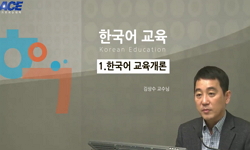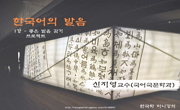Purpose of this work is to find out the differences and similarities of Accusative cases of Mongolian and Korean languages. Although many research works have been done on accusative cases of the two languages, the work on comparison of their meaning a...
http://chineseinput.net/에서 pinyin(병음)방식으로 중국어를 변환할 수 있습니다.
변환된 중국어를 복사하여 사용하시면 됩니다.
- 中文 을 입력하시려면 zhongwen을 입력하시고 space를누르시면됩니다.
- 北京 을 입력하시려면 beijing을 입력하시고 space를 누르시면 됩니다.

한국어와 몽골어 비교 ~목적격조사 ‘을/를’ 중심으로 = A comparison between Korean objective proposition and Mongolian
한글로보기https://www.riss.kr/link?id=A107348382
- 저자
- 발행기관
- 학술지명
- 권호사항
-
발행연도
2009
-
작성언어
-
- 주제어
-
KDC
800
-
등재정보
KCI등재
-
자료형태
학술저널
-
수록면
105-134(30쪽)
- 제공처
-
0
상세조회 -
0
다운로드
부가정보
다국어 초록 (Multilingual Abstract)
The similarities of the cases:
Accusative cases of the two languages both are manifested as: the direct object of predicate (action), the direction of action, the indirect object of action, quantity and orders related to the action, cognate object, object that indicate any modification (change), of actions some objects act tools or material, objects joined with the words that carry the meaning of time, objects combined with gerunds
Differences between the cases: the beginning of action, direction of action, the place that the action is being happened in, The place that the action is being directed to, results of action, the factor that makes (forces)the subject do the action, object that is being needed for having an action, some objects can be joined with auxiliary verbs, some objects that make clear the meaning of the nouns combining with adverbs, the objects with “say” or “tell” manifest that the objects were brought from other’s opinion, nouns can be the objects of verbs: speak, talk, ask as a meaning of about whom, objects can be used with words related to the profession.
In such ways we have tried to show the differences and similarities of these accusative cases. But we would like to continue our research work on this aspect widely.
Purpose of this work is to find out the differences and similarities of Accusative cases of Mongolian and Korean languages. Although many research works have been done on accusative cases of the two languages, the work on comparison of their meaning and functions hasn’t been started so far. I have worked to show the differences and functions of the languages comparing and explaining the brought examples from each languages. From this we can do the conclusion that in Korean language suffix of accusative case~reel is followed by vowel endings, suffix-eel followed by consonant endings. In Mongolian language suffixes of accusative case-iig, ~ii, ~g form nouns depending on that if the nouns are masculine or feminine and if the nouns have possessive meaning.
The similarities of the cases:
Accusative cases of the two languages both are manifested as: the direct object of predicate (action), the direction of action, the indirect object of action, quantity and orders related to the action, cognate object, object that indicate any modification (change), of actions some objects act tools or material, objects joined with the words that carry the meaning of time, objects combined with gerunds
Differences between the cases: the beginning of action, direction of action, the place that the action is being happened in, The place that the action is being directed to, results of action, the factor that makes (forces)the subject do the action, object that is being needed for having an action, some objects can be joined with auxiliary verbs, some objects that make clear the meaning of the nouns combining with adverbs, the objects with “say” or “tell” manifest that the objects were brought from other’s opinion, nouns can be the objects of verbs: speak, talk, ask as a meaning of about whom, objects can be used with words related to the profession.
In such ways we have tried to show the differences and similarities of these accusative cases. But we would like to continue our research work on this aspect widely.
동일학술지(권/호) 다른 논문
-
- 한국어문학국제학술포럼
- ( Sainbilegt¸ D. )
- 2009
- KCI등재
-
- 한국어문학국제학술포럼
- 王丹 ( Wang¸ Dan )
- 2009
- KCI등재
-
정보적 텍스트를 고급 한국어 읽기 수업에서 활용할 수 있는 방법에 대한 연구
- 한국어문학국제학술포럼
- ( D. Otgontsetseg )
- 2009
- KCI등재
-
Derivation of nouns denoting human -beings in Korean : morpho-stylistic aspect
- 한국어문학국제학술포럼
- ( Andrii Ryzhkov )
- 2009
- KCI등재




 KISS
KISS






